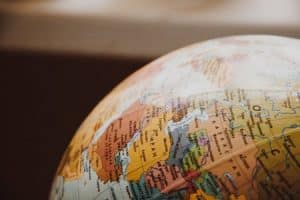Forgotten Trade Routes: Following Ancient Merchant Paths
In today’s modern world, trade routes are often associated with massive cargo ships, bustling ports, and advanced transportation methods. However, long before the age of globalization, there were forgotten trade routes that connected distant civilizations and shaped the course of history. These ancient merchant paths were once the lifeline of commerce, carrying goods, ideas, and cultures across vast distances. From the Silk Road to the Amber Routes, these forgotten trade routes hold a wealth of knowledge and stories waiting to be uncovered. Join us as we follow the footsteps of ancient merchants and explore these lost paths of trade.
The Silk Road: Tracing the Journey of Silk
The Silk Road is perhaps the most well-known trade route in history, and for a good reason. This 4,000-mile-long network connected East and West, stretching from China to the Mediterranean Sea. In addition to silk, this ancient trade route facilitated the exchange of spices, tea, gunpowder, and porcelain. It also served as a conduit for cultural and religious exchange between the East and the West, shaping civilization as we know it today.
The Amber Routes: A Golden Trade Network
While not as famous as the Silk Road, the Amber Routes were just as vital in ancient trade. This intricate network connected the ancient civilizations of the Baltics, Central Europe, and the Mediterranean, facilitating the exchange of amber, a precious commodity used for its medicinal properties, but also for decorative and religious purposes. Traversing through the harsh Northern European terrain, the amber routes were a true testament to the resilience and determination of ancient merchants.
The Incense Route: A Fragrant Journey
As the name suggests, the Incense Route was a trade path that revolved around the trade of frankincense, myrrh, and other aromatic resins. Spanning over 2,000 miles, this ancient trade route connected the Arabian Peninsula to the Mediterranean, India, and China, making it a crucial link in the global trade network. Carvanserais, or resting places for travelers, were built along the route, making it possible for merchants to undertake the long and perilous journey through the desert.
The Grand Canal: The Waterway of China
The Grand Canal is the oldest and longest canal in the world, stretching over 1,100 miles from Beijing to Hangzhou. Built during the Sui Dynasty in the 7th century, this waterway revolutionized trade and transportation in China, connecting the Yellow River in the North to the Yangtze River in the South. It enabled the exchange of goods such as rice, silk, and tea between the prosperous cities of the North and the agricultural regions of the South.
The Trans-Saharan Trade Routes: A Link between Africa and the Mediterranean
The Trans-Saharan trade routes were a series of caravan routes that crisscrossed across the Sahara Desert to connect the West African kingdoms to the Mediterranean world. Salt, gold, ivory, and slaves were some of the commodities traded along this route, sustaining the wealth and power of the great empires of Ghana, Mali, and Songhai. The trade also facilitated the spread of Islam to West Africa, shaping the region’s culture and religion.
The Spice Routes: A Journey of Sensory Overload
No discussion of ancient trade routes would be complete without mentioning the Spice Routes. This complex network connected Asia, Europe, and Africa and brought a myriad of exotic spices such as cinnamon, pepper, nutmeg, and cloves to distant lands. These spices were highly prized for their medicinal properties and their ability to preserve food, making them extremely valuable commodities.
Conclusion
Although these trade routes may now be forgotten, their impact on world history is immeasurable. They played a crucial role in the development of civilizations, the spread of ideas, and the exchange of goods. Walking in the footsteps of these ancient merchants not only offers a glimpse into the past but also highlights the interconnectedness of our world and the importance of trade in shaping our society.
So the next time you sip on a cup of tea, enjoy the scent of incense, or admire a piece of silk, remember the forgotten trade routes and the long and arduous journeys that made it possible for these goods to reach your hands.





